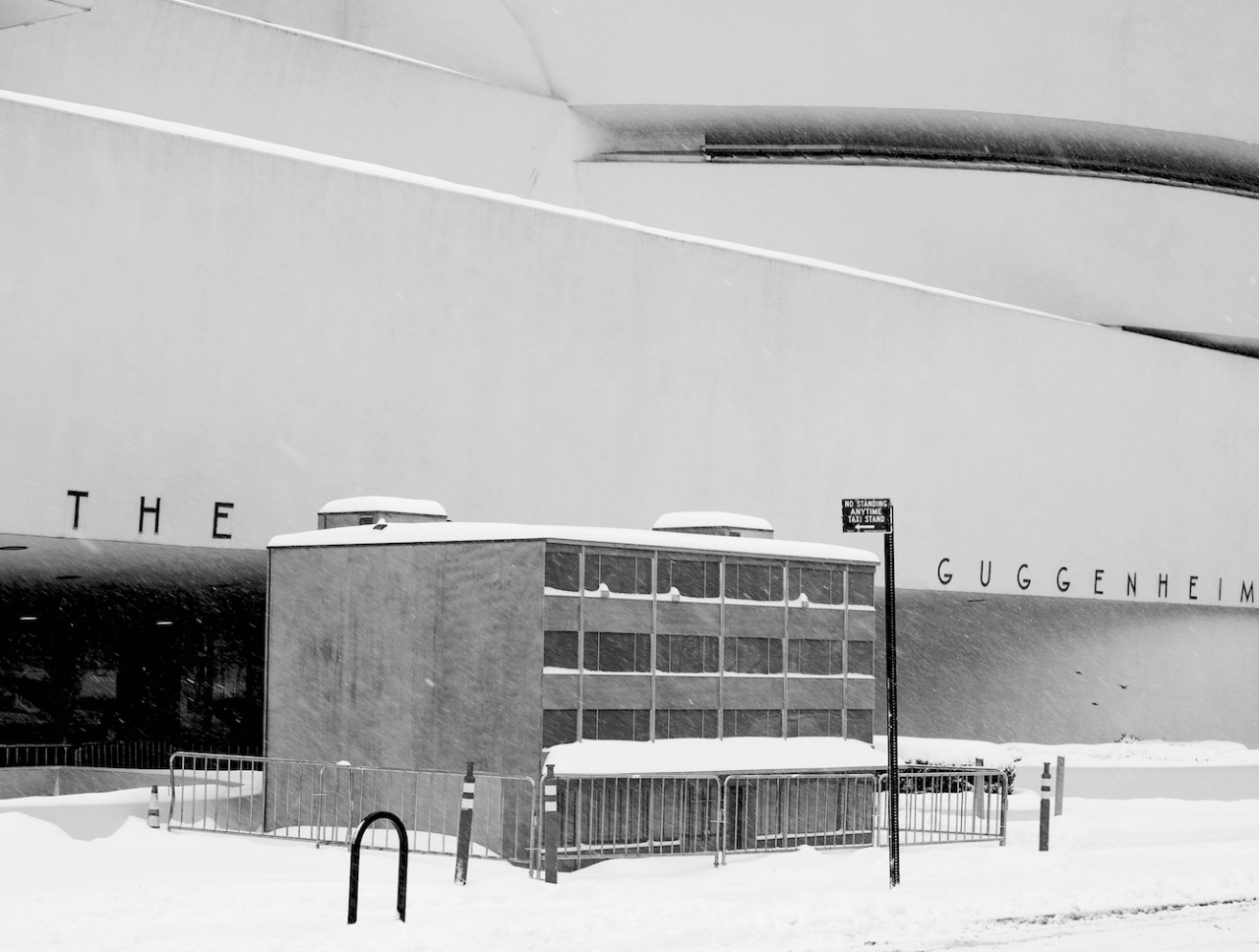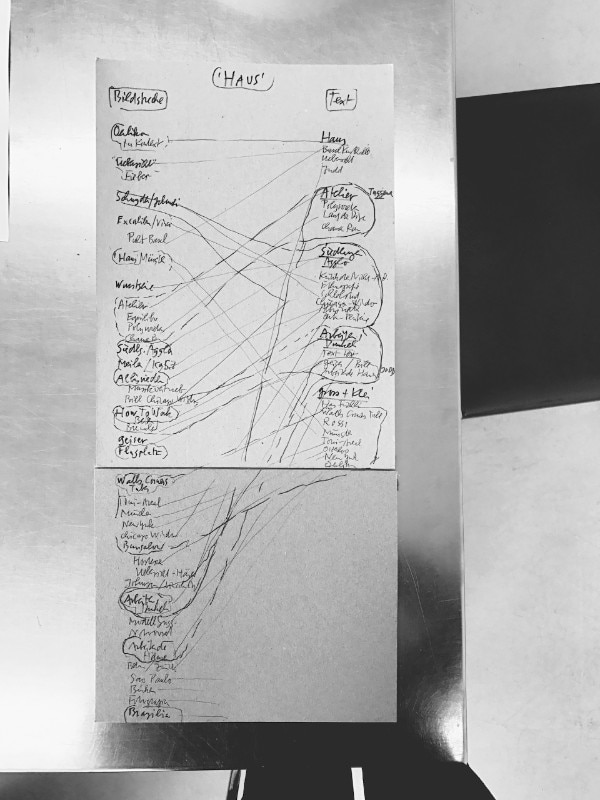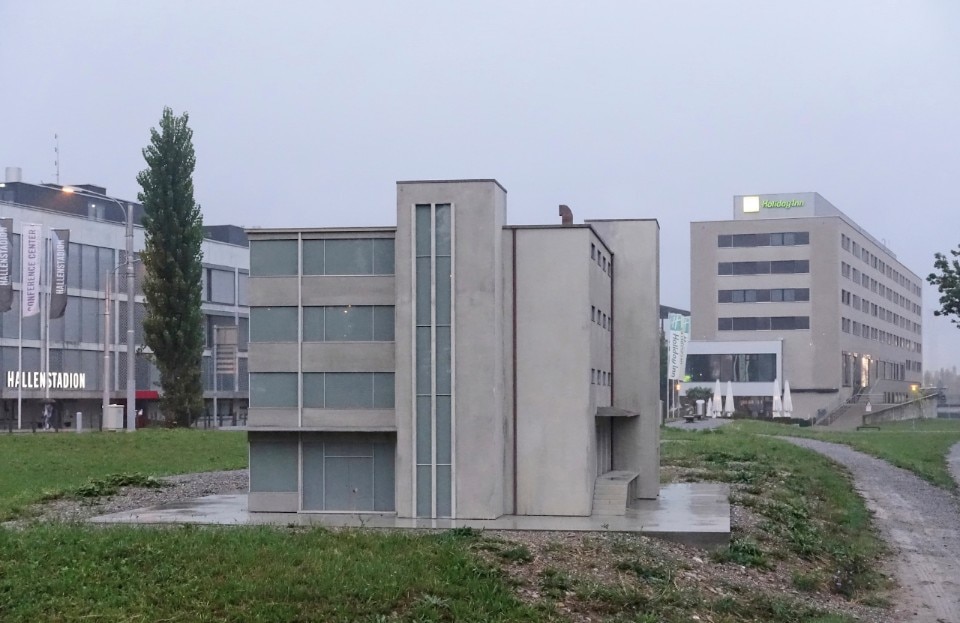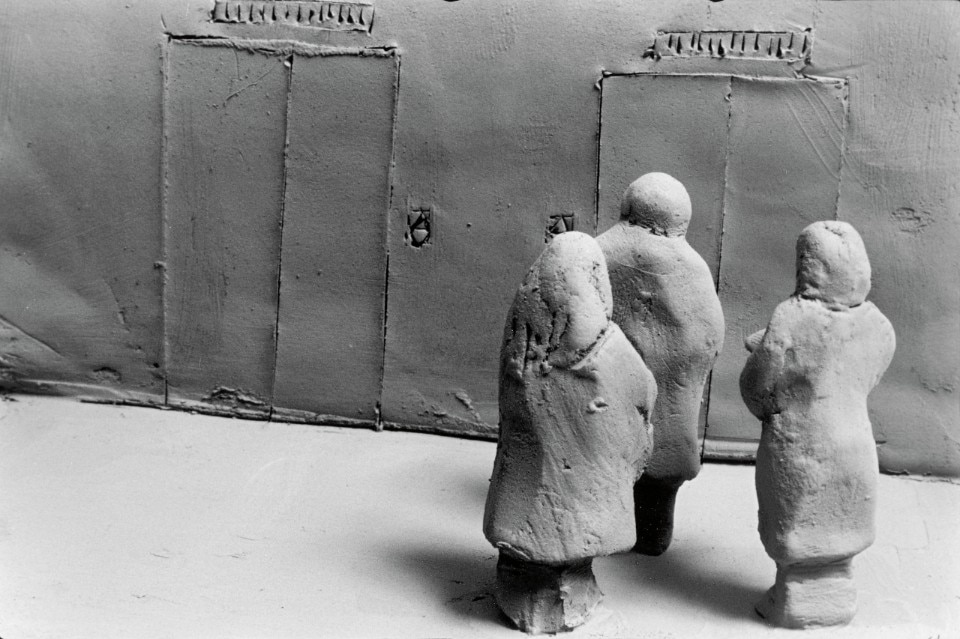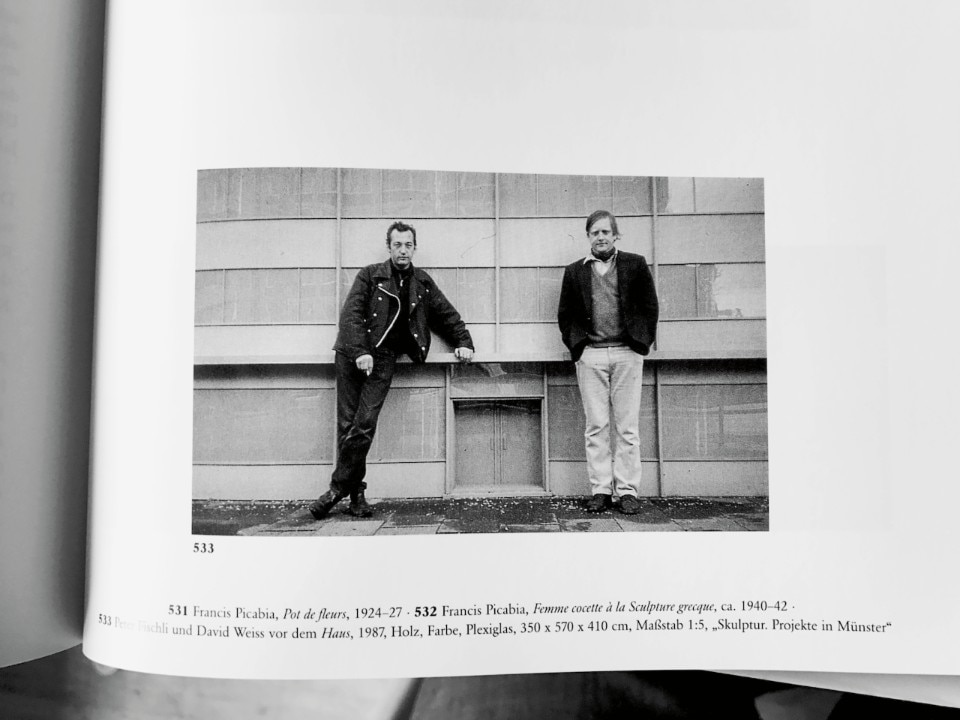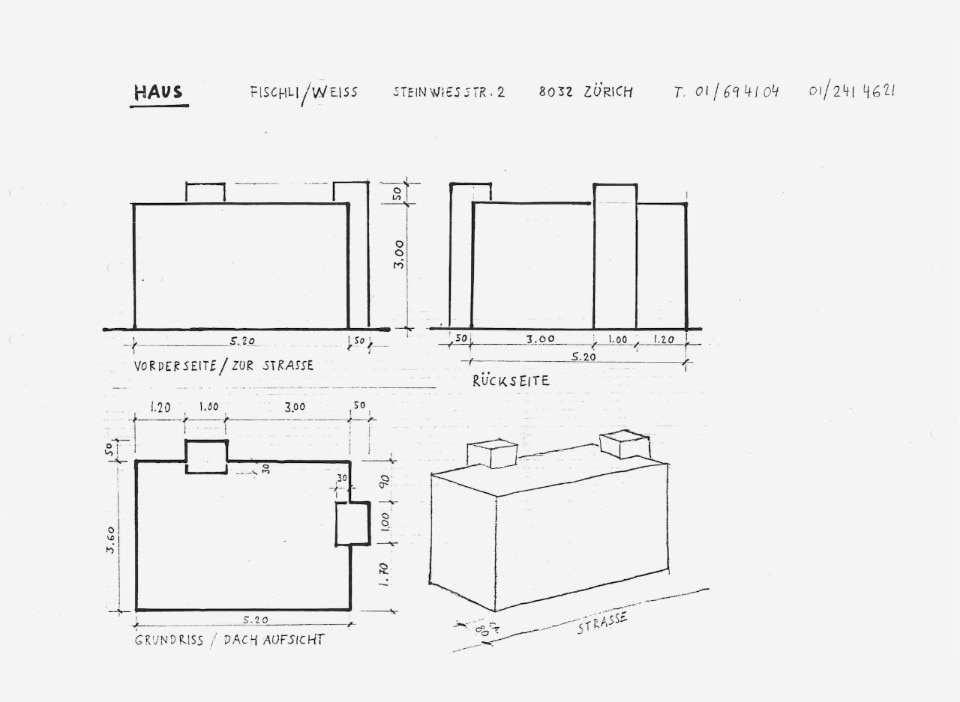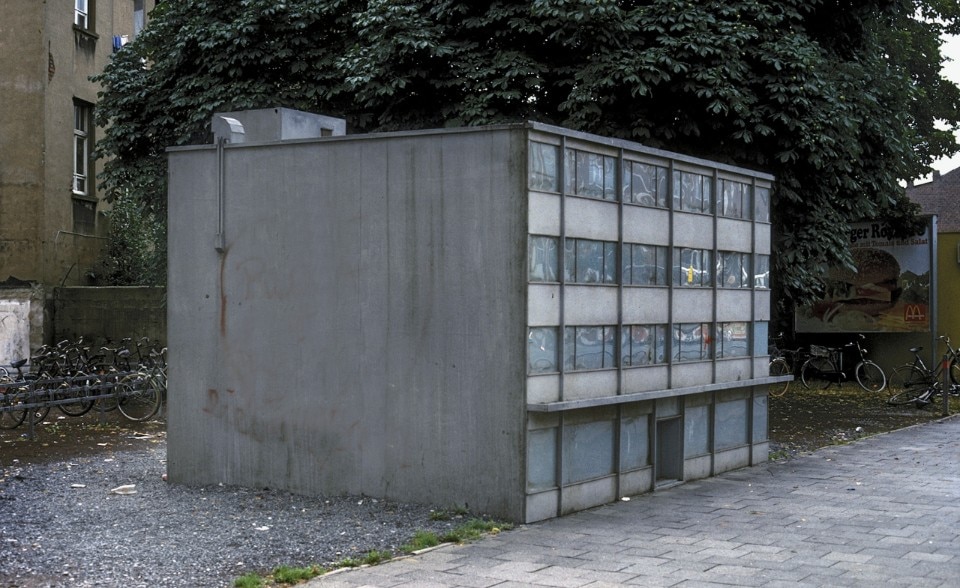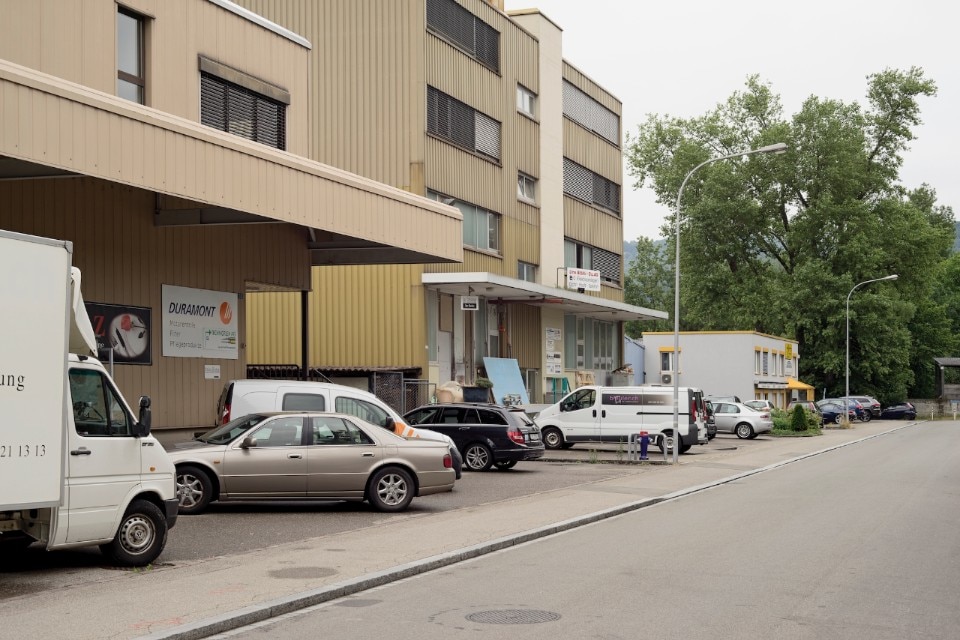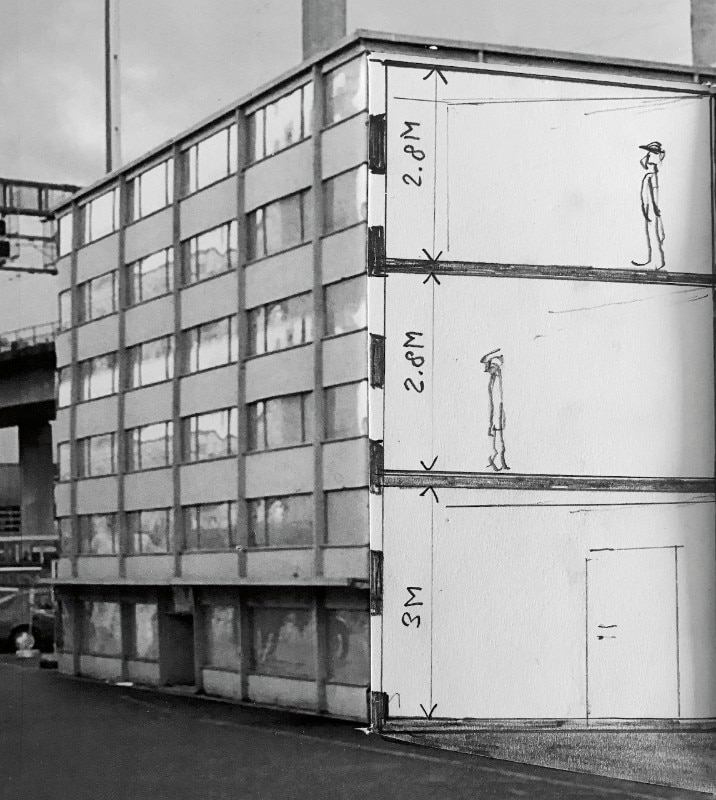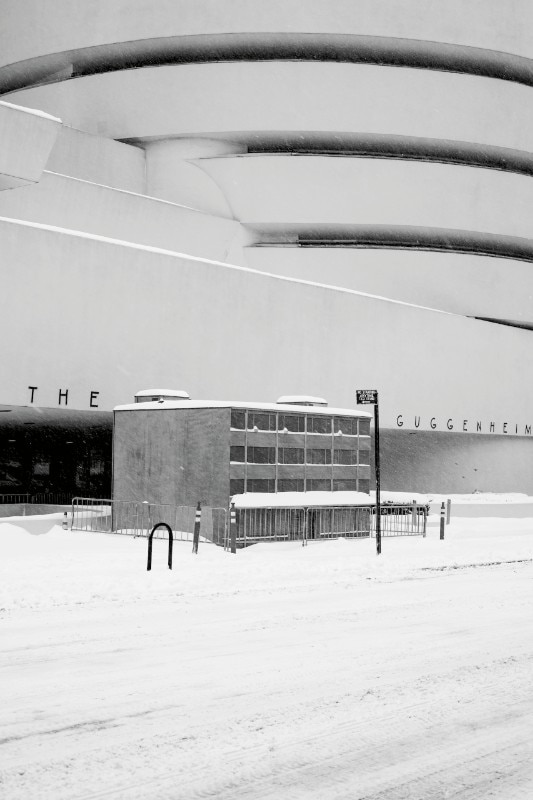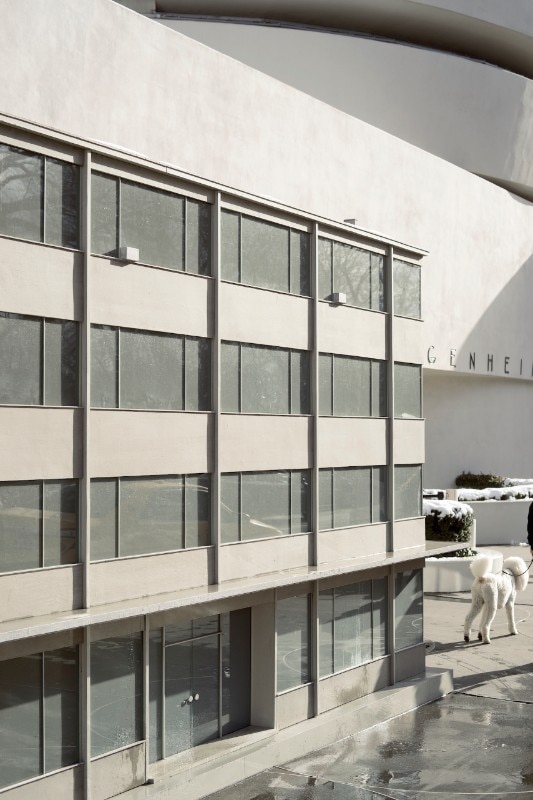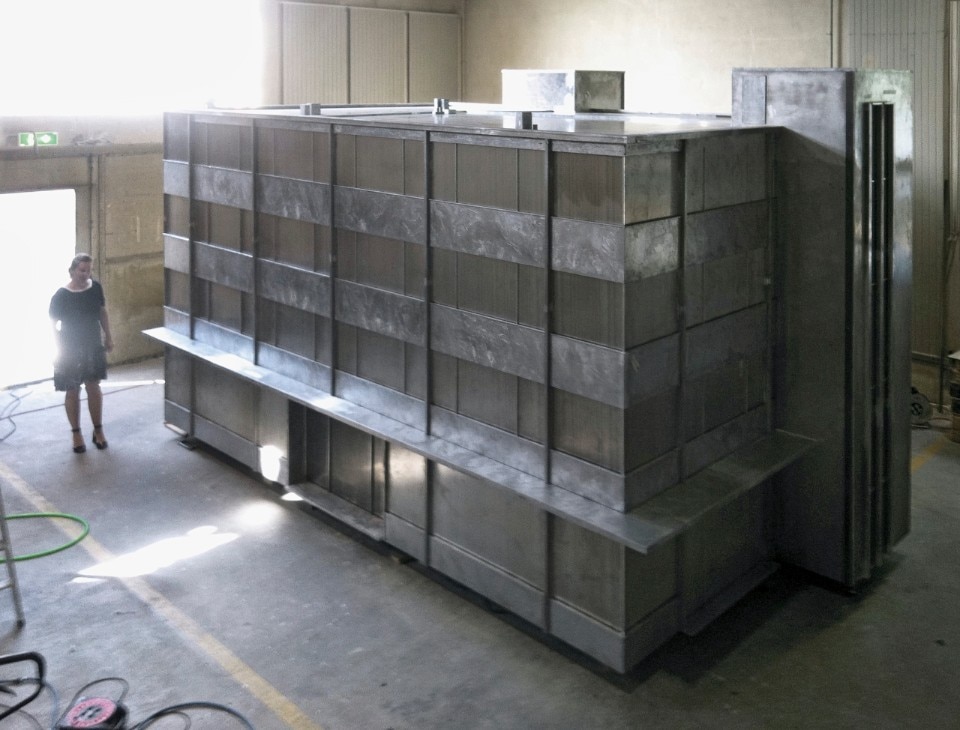This article was originally published on Domus 1049, September issue
A mock-up of a four-storey office building, big enough to catch the eye of passing motorists and pedestrians but too small to serve as a usable building, and yet too massive to suggest even an oversized doll’s house: is it a monument? The reconstruction of some his- toric event or crime scene ‒ the site, an apparently random patch of grass between a gas station, some traffic lights, and a velodrome in Oerlikon, Zurich, rather accentuates the mystery.
But what if we are wrong in assuming that Haus necessarily derives its hypothetical meaning from some other “real” building, maybe a small factory and office building on the outskirts of the city, such as the headquarters of some “small and medium-sized business”? What if its function as a mock-up was actually secondary and it was really about the trick of manipulating the viewer’s perceived distance from the object by scaling down its all too familiar details ‒ windows, doors, stairs, a loading platform ‒ so as to make the whole thing look “too small” with respect to the viewer’s expectations? In which case the problem would lie not in the building referenced by the artwork ‒ that is a specific site of industrial activity ‒ but in the viewer’s mind, or indeed in his or her attitude towards or memories of this kind of building? And wouldn’t the reduction in scale then have to be seen as tantamount to some form of emo- tional detachment or distance in time? Either way, Haus, as it now stands in its semi-industrial no man’s land, is both a child of and a tribute to the outskirts of Zurich. And although an outlier in more ways than one, Haus may turn out to be a centrepiece in the oeuvre of Fischli/Weiss. Moreover, its complicated genesis is part of an unusual story of experimental research in urban studies.
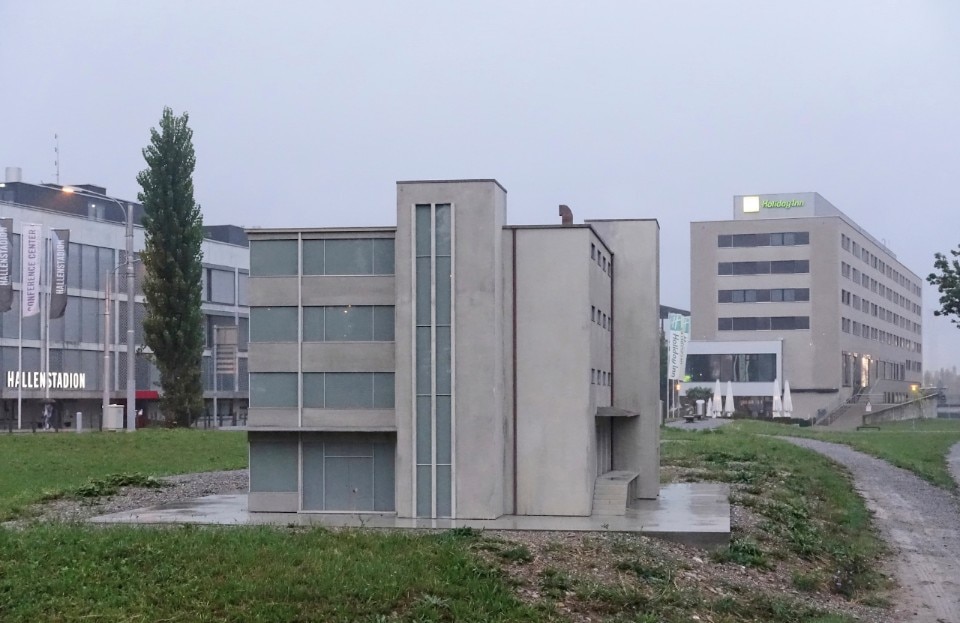
Desk
Peter Fischli (b. 1952) and David Weiss (1946-2012) grew up near Zurich: Fischli in the town of Meilen along Lake Zurich, Weiss in semi-industrial Albis- rieden. Their paths crossed in the city and during a joint visit to Möbel Pfister, the “biggest furniture store in Switzerland” (located in the nearby canton of Aargau and notorious among the educated for its “vulgar” taste, they decided to join forces in view of certain, then still unidentified, artistic under- takings. It was not long before they executed their first large-scale version of Haus, as part of a series of polyurethane objects all centred on “architectural” themes (Grey Sculptures, 1984–1986). Fischli was thirty-two at the time, Weiss thirty-eight. Haus was an outlier in this series by dint of its considerable size (120 x 110 x 160 cm) and its unusually painstaking attention to detail.
Somewhat later, Fischli and Weiss were granted the first big survey of their work, entitled A Restless Universe (Ein ruheloses Universum) and shown at the Kunsthalle Basel in 1985. Like a massive, clunky piece of furniture, Haus took pride of place among the many works shown; it seemed to stake a peremptory claim over the other exhibits. “Haus is about the size of a desk,” reported art critic and writer Patrick Frey. In its bodily bulkiness, Haus was far “more than just a model of its kind,” Frey wrote; it seemed to form part of the Kunsthalle furniture and hence immediately became “a physical presence, utterly alien and yet almost demonically familiar”. True, some exhibition-goers may have overlooked Haus on account of the object’s apparent ordinariness. What doubtlessly triggered curiosity more than anything else in the show was Suddenly This Over- view (Plötzlich diese Übersicht, 1981–present), a now legendary collection of roughly 200 small clay sculp- tures, a mix of “gossip, quirks, myths, legends and bible stories” executed in crude clay, as if heaved up out of the collective memory overnight (the series was actually produced over four weeks). And then there was Fever (Fieber, 1983-1984), a group of large, colourfully painted, rough and rumpled carvings in polyurethane, primal biomorphic and zoomorphic figurations that seem to have welled up out of the phantasmagorical visions of a Hieronymus Bosch and fallen into the hands of a horror film prop master – like larger-than-life invocations of the assembled evil spirits of Mother Earth.
Amid all this sits Haus, an exposition of bureau- cratic orderliness coupled with the trappings of modern-day sanitary engineering, as if the point were somehow to compensate for the anarchy of the primordial clay sculptures and the Walpurgis night of Fever.
Haus ha preso possesso come con un colpo di gong della “terra di nessuno” tra architettura, urbanistica e scultura
The irritation caused by the ambivalent nature of this object (Is it a desk? a mock-up of a building?) raises any number of questions. For example, what about those stereo-metric features on the roof: are they meticulously reconstructed chimney fittings and air vents or cisterns for the sprinkler system in case of fire? They do not also look a bit like an inkwell, pencil sharpener, eraser and pencil case on an office clerk’s desk?
Yet the paradox lies less in the contrast between the disciplines of sculpture and architecture (or interior design) and more in the apparent inversion of their traditional ways of interpreting “nature”. While in Suddenly This Overview the artists wildly distort nature and figuration‒ to the point of “up- ending the illustration effect” (Jean-Christophe Ammann) ‒ in Haus they go all out to amaze the viewer with the precisionist mimetics of their arti- fice. The “abstract” art of architecture thus becomes the “figurative” subject of sculpture.
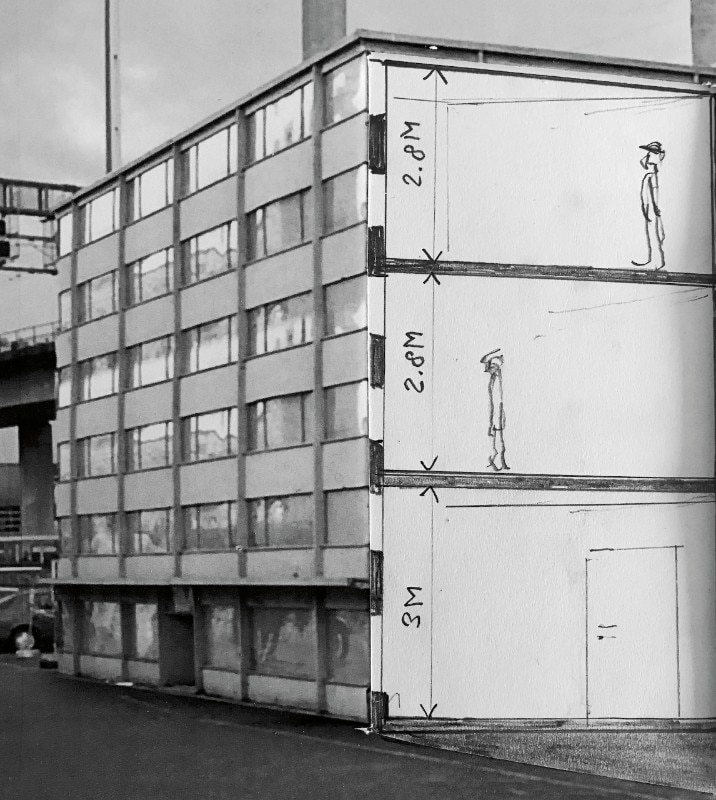
From “model” to “architectural sculpture”
In the follow-up to the Basel exhibition, Fischli/ Weiss fashioned a substantially enlarged replica of Haus (1987, 350 x 370 x 410 cm) for the “Sculpture
Projects” (“Skulptur Projekte”) show in Münster. It was, in the words of art critic Robert Fleck, their “first monumental work for a public space”. As a sculpture, made of painted wood and Plexiglas, the work didn’t fail to irritate. Mario Merz, who was exhibiting in Münster too, allegedly knocked on the model and scoffed, “But, it’s made of wood!” And yet, isn’t the work’s impermanent quality and “ephem- eral” materialisation perfectly appropriate to the challenge of the exhibition’s theme, since it implied forging a link between sculpture on the one hand and the architectural project on the other? After all, by literally submitting a “Sculpture Project” to the exhibition, the artists were also carrying on an age-old tradition of ephemeral architecture, a highly important but not so well studied aspect of Renaissance and baroque architecture.
Thus, whether as architectural “project” or as “sculpture”, Haus, like the stroke of a gong, took possession of the “no-man’s-land” between archi- tecture, urban planning and sculpture. And it did so at the very moment when that realm began to take an interest in art.
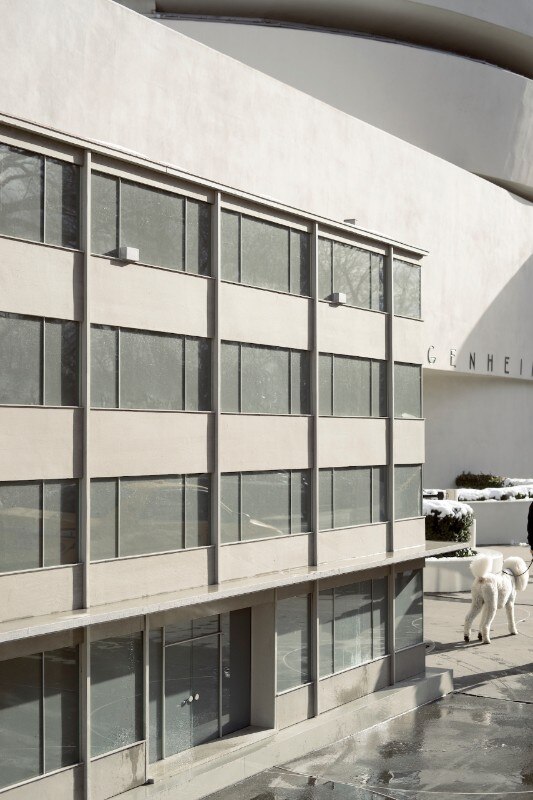
Architectures on display
The “renaissance” of architectural model in art (as exemplified by the Kunsthalle Basel in 1985) did not happen by coincidence. In the 1980s, architects and architecture were about to enter the sphere of mythical narratives worthy of public attention. Late 1970s Europe had seen a veritable glut of architec- tural exhibitions and newly created museums of architecture, culminating in 1980 in “La presenza del passato” (“The Presence of the Past”), the first architecture exhibition at the Venice Biennale. A few years later, in 1984, the Deutsches Architek- turmuseum (DAM) opened in Frankfurt am Main. The villa now housing the museum was emptied and gutted, whereupon the architect, Oswald Mathias Ungers, “occupied” the core of the house with a model of a two-storey house that remains a sort of DAM trademark to this day. Jean-Christophe Ammann, the director of the Kunsthalle Basel at the time, was not unaware of architecture’s increasing visibility on the horizon of the 1980s visual culture. In Basel itself, an early symptom was Donald Judd’s Unti- tled (six cold-rolled steel boxes) (1969), centrally displayed at the Kunstmuseum Basel in 1975 and a harbinger of things to come, even if its connection to architecture is more conceptual than figurative. As to Richard Serra’s increasing visibility in that city, it too turned gallery talk towards questions of built form and space.
Over the course of this process, the architectural model became a permanent guest in the world of galleries and museums. Had its engagingly rep- resentational nature succeeded in restoring some of the figurative directness that painting and sculp-
ture had lost in the wake of artistic abstraction and the cult of esoteric subjectivity? Be that as it may, artists such as Dan Graham, Per Kirkeby, Rachel Whiteread, Thomas Schütte, and Siah Armajani, so highly regarded by Ammann, powerfully filled the perceived semantic vacuum abstraction had left behind. Not to mention the “neutron bomb effect” of Thomas Demand’s eerily meticulous crime scene reconstructions, whose restoration of the model’s archetypal function as a piece of historical evidence is even more unambiguous than that of Suddenly This Overview.
Stanislaus von Moos is an art historian and architectural theorist. He has taught worldwide and published several books covering, among other things, Le Corbusier, the Italian Renaissance, and 20th-century design. This text is an extract from his latest book Fischli/Weiss: Haus edited by the Luma Foundation and published by Verlag der Buchhandlung Walther König (2020).


